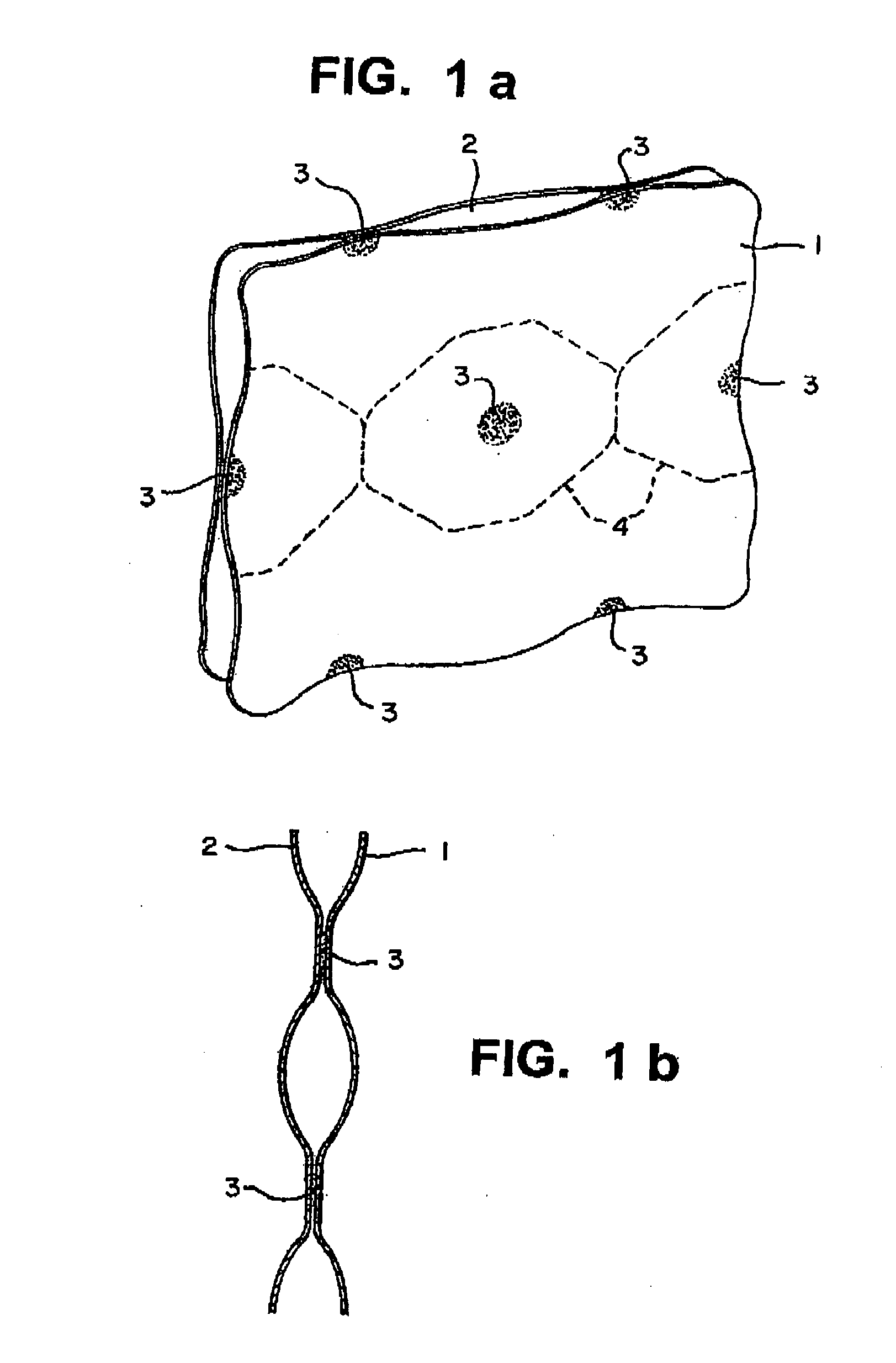Pillow panel reactor and process
- Summary
- Abstract
- Description
- Claims
- Application Information
AI Technical Summary
Benefits of technology
Problems solved by technology
Method used
Image
Examples
example 1
[0061]A 1 mm tri-lobe extrudate was prepared using 62.97 grams of Pural 100 alumina, 0.04 g 1:100 HNO3: distilled water solution, and 46 grams distilled water. The paste was worked for 10 minutes. The paste was then extruded with a laboratory extruder using a 1 mm tri-lobe die. The extrudate was dried for 12 hours at 120° C. and then ramped to 750° C. and calcined for 4 hours. 10 grams of the above extrudate was used to prepare a 20% Cobalt and 0.1% Ruthenium catalyst. A 15% Cobalt Nitrate solution was used to impregnate the support in 2 passes with 2 hours drying at 120° C. and 2 hours ramp to 300° C. with a 2 hour hold between passes. Ruthenium was added in the 2nd pass only prior to drying and calcination. An additional 10% Cobalt was added with 2 more passes of Cobalt Nitrate solution, each followed by the same calcination procedure described above. The resulting catalyst has 30% Cobalt and 0.1% Ruthenium. The catalyst is referred to as catalyst 1 in the table 1 below.
example 2
[0062]A 1 mm tri-lobe extrudate was prepared as in example 1. This extrudate was crushed and sieved to a particle size of 250-425μ. A 13.2 g sample of the crushed and sieved support was used to prepare a 30% Cobalt and 0.1% Ruthenium catalyst. A 15% Cobalt Nitrate solution was used to impregnate the support in 4 passes with a 2 hour drying step at 120° C. and a 2 hour ramp to 300° C. followed by a 2 hour hold for each pass. The Ruthenium was added in the 4th pass only prior to drying and calcination. This catalyst is identified as catalyst 2 in table 1 below.
TABLE 1Catalytic performance of catalysts 1 and 2.Conver-C1H2 / sionselectivityC5+ProductivityCO feedGHSVCatalyst 164.115.176.64121.82750Catalyst 264.96.287.27491.84750*All data at 400° F., 400 psig
example 3
[0063]A 110 cc sample of catalyst support crushed and sieved to 250-425 u was loaded into a 0.5 inch i.d. tubular reactor for pressure drop measurement. The catalyst zone was 3 ft in length. A representative syngas with a 2 / 1H2:CO ratio was passed over the catalyst support at various flow rates and pressure drop measurements were taken and are recorded in table 2 below. An Ergon equation was used to calculate some of the pressure drops for comparison and to calculate pressure drop at higher velocity than was measured. The highest flow (1800 sccm) for the calculated pressure drop is 0.52 ft / s.
TABLE 2FlowPress drop-PSIPress drop-PSI(sccm)(measured)(calculated)18652.929094.638836.46.448808.059009.411.869189.91450022.21800028.9
PUM
| Property | Measurement | Unit |
|---|---|---|
| Length | aaaaa | aaaaa |
| Height | aaaaa | aaaaa |
| Temperature | aaaaa | aaaaa |
Abstract
Description
Claims
Application Information
 Login to View More
Login to View More - R&D
- Intellectual Property
- Life Sciences
- Materials
- Tech Scout
- Unparalleled Data Quality
- Higher Quality Content
- 60% Fewer Hallucinations
Browse by: Latest US Patents, China's latest patents, Technical Efficacy Thesaurus, Application Domain, Technology Topic, Popular Technical Reports.
© 2025 PatSnap. All rights reserved.Legal|Privacy policy|Modern Slavery Act Transparency Statement|Sitemap|About US| Contact US: help@patsnap.com



